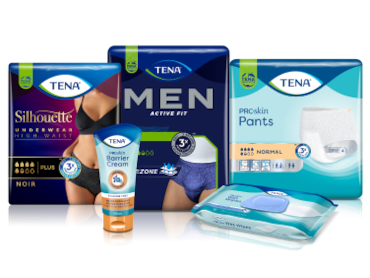Here at TENA, we spend each day looking for new and better ways to care – for people, and for the planet. Our mission with the TENA Protects Program is to make better choices, acknowledging what we leave behind matters, and recognizing that every action we take today can contribute to a healthier planet tomorrow.

Every step matters

Carbon footprint: what it is, and TENA's Progress
Explore the strides TENA has made since 2008 in reducing the carbon footprint of our products. See some of our key product advancements and take a closer look at how carbon footprint works and why it matters.
End-to-end improvements
The Life Cycle Assessment (LCA) is a globally recognised method of measuring the impact of our products in every stage of their life cycle. Discover what goes into making your product, and how we’re able to improve its carbon footprint in each stage thanks to LCAs.

